Introduction to Omnichannel Marketing
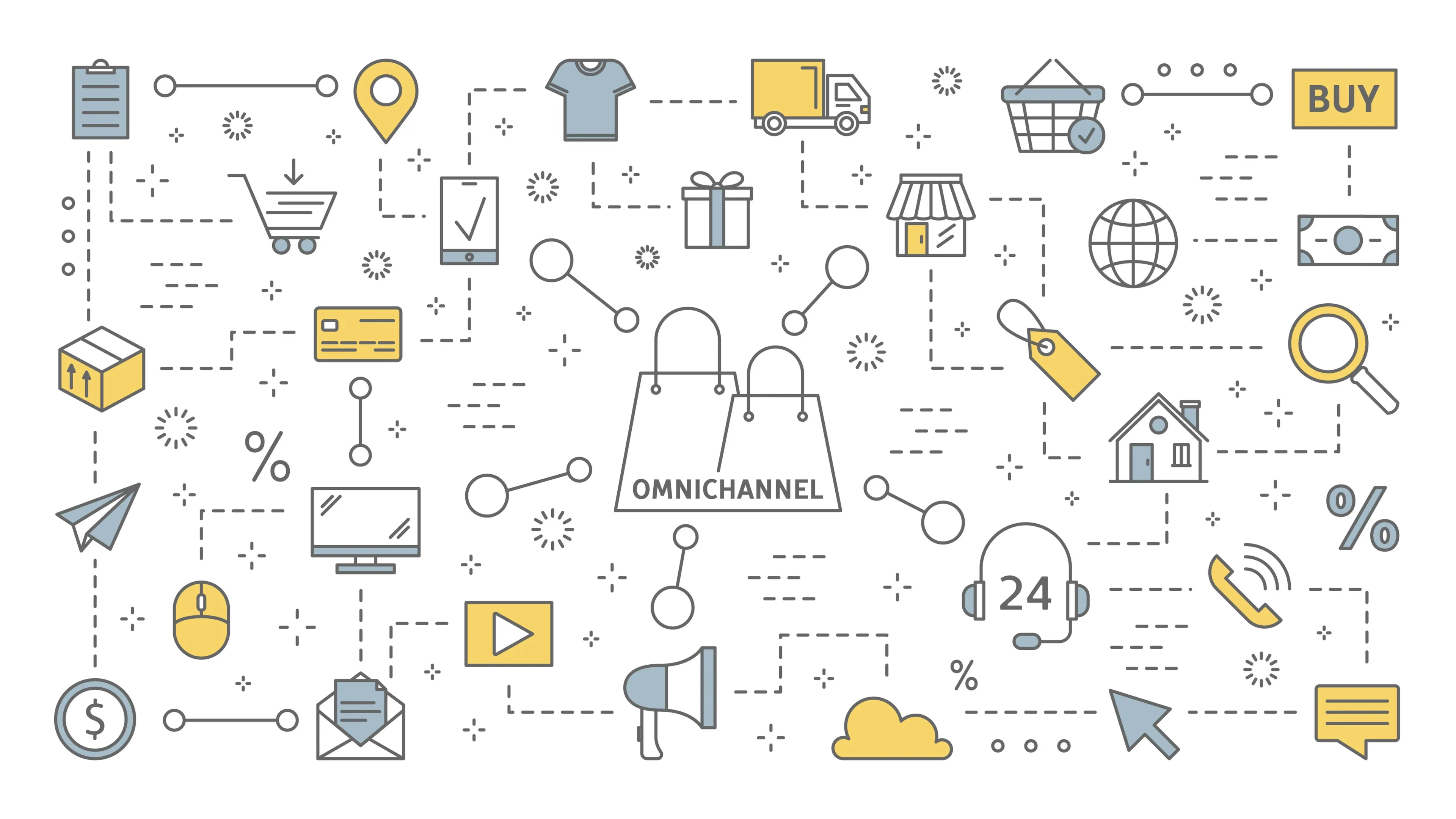
What is an Omnichannel Marketing
Omnichannel marketing is a strategic, multi-channel approach aimed to create a seamless customer experience across multiple channels and devices. It aims to create a cohesive brand presence that allows customers to interact with a company through various platforms and devices in a way that feels consistent and unified.
It ensures that whether a customer interacts with a brand through social media, a mobile app, a brick and mortar store, or online channels, the experience is consistent, personalized, and reflective of their previous interactions.
This strategy leverages customer data and insights to deliver cohesive customer experiences, enhancing customer loyalty and retention. By integrating marketing channels, from digital channels to physical stores, and utilizing data analytics, businesses can meet customers' expectations more effectively and provide customer service that is both responsive and anticipatory.
The ultimate goal of omnichannel marketing is to build long-term customer relationships by making every touchpoint an opportunity for engagement, thereby improving overall customer satisfaction and driving brand loyalty.
Key Elements of an Omnichannel Experience
Omnichannel Marketing vs. Multichannel Marketing vs. Single-channel Marketing
Why Does Omnichannel Matters

Understanding the significance of omnichannel marketing in retail landscape is important for businesses aiming to thrive. This approach not only meets customers on their preferred platforms but also ensures a unified brand experience.
Let's delve into why omnichannel strategy is important
Enhanced Customer Experience
- Omnichannel marketing provides a seamless experience across online and offline channels, ensuring that customers receive consistent messaging, branding, and service whether they're shopping on a website, mobile app, or in a physical store.
- Customers today expect fluidity in their shopping experience. A study by Harvard Business Review found that 73% of shoppers use multiple channels during their shopping journey.
- Implementing technologies like CRM (customer relationship management) systems to track customer interactions across channels helps businesses personalize experiences, showing customers they're valued and understood.
Increased Customer Retention
- A cohesive omnichannel strategy significantly boosts customer retention rates.
- Consistency breeds familiarity and trust, which in turn fosters loyalty. According to a report by Omnisend, customers engaging with an omnichannel experience have a 30% higher lifetime value compared to those who shop using only one channel.
- Businesses can increase retention by using data analytics to offer personalized promotions and content across all channels, making customers feel special and incentivized to return.
Higher Engagement
- Omnichannel marketing strategies drive higher engagement by meeting customers where they are and interacting with them through their preferred channels.
- Leveraging social media, email marketing, and push notifications in a coordinated way ensures that messages resonate more deeply, encouraging active participation from the audience.
Better Data Insights
- An omnichannel approach offers valuable insights into customer behavior, preferences, and buying patterns.
- Understanding the customer journey across all touchpoints allows businesses to make informed decisions.
- For instance, the IDC reports that businesses utilizing big data and analytics for their omnichannel strategies see a 15-20% increase in ROI.
- Integrating data from all channels into a unified analytics platform enables businesses to tailor their strategies more effectively, predicting future trends and customer needs.
Competitive Advantage
- Offering an omnichannel experience can significantly differentiate a brand from its competitors.
- In a digital age where options are plentiful, brands that provide an effortless and cohesive customer journey stand out.
- Brands can achieve this by consistently innovating their approach to customer interaction, ensuring they're always accessible, responsive, and engaging across all platforms.
Examples of Omnichannel Marketing Techniques
1. Integrated E-commerce and In-store Experience:
- Click-and-Collect: Customers can purchase online and pick up in-store, blending online convenience with in-store service.
- In-store Returns for Online Purchases: This provides a seamless return process, improving customer satisfaction.
Ikea has mastered the click-and-collect service, allowing customers to order online and pick up at a local store. This service combines the convenience of online shopping with the immediacy of in-store pickup.
2. Personalized Customer Engagement:
- Personalized Marketing Messages: Using customer data to send personalized emails, SMS, or app notifications based on their preferences and past behavior.
- Customized Shopping Experiences: Online platforms can offer personalized recommendations and discounts to users based on their browsing and purchasing history.
Amazon excels in personalized marketing messages and customized shopping experiences by using customer data to provide highly personalized product recommendations and tailored email campaigns.
3. Consistent Branding Across Channels:
- Unified Design and Messaging: Ensuring that all touchpoints (website, mobile app, social media, physical stores) have consistent branding, design, and messaging to provide a cohesive brand experience.
Apple ensures a unified design and messaging across all its channels, from its website to its physical stores, creating a cohesive and recognizable brand experience for customers.
4. Cross-channel Customer Service:
- Integrated Customer Support: Offering support through multiple channels (phone, email, chat, social media) and ensuring that customer interactions are tracked and accessible across all platforms.
- Self-service Options: Providing comprehensive FAQs, chatbots, and interactive tools across channels, allowing customers to find solutions seamlessly.
Zappos offers exceptional integrated customer support, allowing customers to reach out via phone, email, chat, or social media, and ensuring that the service quality is consistent across all platforms.
5. Social Media Integration:
- Shoppable Posts and Ads: Enabling customers to make purchases directly through social media posts and ads.
- Social Media as a Service Channel: Using social platforms to provide customer support and engage with customers in real-time.
Nike leverages shoppable posts and ads on platforms like Instagram, making it easy for customers to purchase directly through social media. They also actively engage with customers and provide support through their social channels.
6. Mobile Optimization:
- Responsive Design: Ensuring websites and emails are mobile-friendly, offering a seamless experience on smartphones and tablets.
- Mobile Apps: Offering branded mobile applications that integrate loyalty programs, shopping, and personalized content.
Starbucks has a highly optimized mobile app that integrates mobile ordering, payments, and their loyalty program, offering customers a seamless mobile experience.
7. Loyalty and Rewards Programs:
- Integrated Loyalty Programs: Allowing customers to earn and redeem rewards across all channels, enhancing the value of multi-channel engagement.
- Exclusive Offers for Multi-channel Engagement: Rewarding customers for interacting with the brand in multiple ways (e.g., following on social media, app downloads).
Sephora's Beauty Insider program is seamlessly integrated across online and in-store experiences, allowing members to earn and redeem points whether they shop online, through the app, or in physical stores.
8. Data and Analytics for Personalization:
- Unified Customer Profiles: Creating comprehensive profiles by collecting data across all channels to better understand customer behavior and preferences.
- Predictive Analytics: Using data analytics to predict customer needs and offer relevant products or services proactively.
Netflix uses data and analytics to create unified customer profiles, which then inform personalized content recommendations across devices, ensuring users always have a customized viewing experience.
9. Seamless Payment Experiences:
- Multiple Payment Options: Offering a variety of payment methods (credit/debit cards, mobile wallets, BNPL) across online and offline channels.
- One-click Purchasing: Streamlining the checkout process for returning customers by saving payment and shipping information.
Apple Pay simplifies the payment process across online and offline channels, offering a secure and fast way to pay using devices customers already use every day.
How to Develop the Ideal Omnichannel Experience
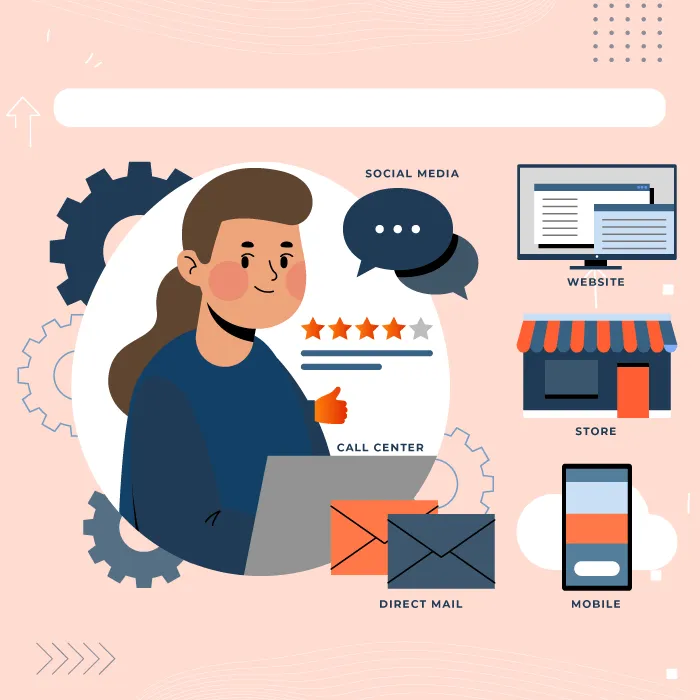
Creating a perfect omnichannel experience is about seamlessly integrating multiple channels to offer a unified and personalized customer journey. This requires strategic planning, effective use of technology, and a deep understanding of your customers.
Here’s how to create an optimal omnichannel experience:
1. Understand Your Customer
Gather Insights: Utilize data analytics to understand customer behaviors, preferences, and pain points. This includes analyzing interactions across all touchpoints—online, in-store, social media, mobile apps, and customer service.
For instance, Netflix uses viewing data to understand preferences and tailor recommendations across devices.
Create Personas: Develop detailed customer personas that represent your various customer segments. Personas should include demographic information, behaviors, preferences, and the channels they use.
Amazon’s customer personas, derived from vast data, allow for targeted product recommendations and personalized shopping experiences across its platform and app.
2. Map Omnichannel Customer Journey
Identify Touchpoints: Map out every touchpoint in the customer journey, from the initial discovery to post-purchase support. Recognize that some customers may start their journey online and complete it in-store, or vice versa.
Disney’s MagicBand system maps out a visitor's journey across the park, integrating touchpoints from hotel check-in to ride access and in-park purchases, creating a seamless experience.
Analyze and Optimize: Identify any gaps or friction points in the journey where customers might drop off or experience dissatisfaction. Look for opportunities to streamline and enhance the journey across channels.
Sephora’s Beauty Bag feature allows customers to save products and looks they’ve experimented with online and access them in-store, enhancing the shopping experience.
3. Integrate Channels for a Unified Experience
Technology Infrastructure: Invest in a robust CRM system and other technologies that enable the integration of data across channels. This ensures that customer information and interactions are synchronized, regardless of where they occur.
Zara’s use of RFID technology integrates online and in-store inventory, offering customers real-time stock information and a unified shopping experience.
Consistent Messaging: Ensure that your brand messaging, promotions, and customer communication are consistent across all channels. Consistency helps to reinforce brand recognition and trust.
Apple’s messaging and visual branding are consistent across its website, app, and physical stores, reinforcing brand identity and trust.
4. Personalize Customer Interactions
Leverage Data: Use customer data to tailor interactions and offer personalized experiences. Personalization can include product recommendations based on past purchases, targeted marketing messages, and customized shopping experiences online and in-store.
Spotify’s Discover Weekly feature uses listening data to curate personalized playlists, showing how data can enhance customer satisfaction across platforms.
Dynamic Content: Implement technology that allows for dynamic content delivery, adjusting what customers see based on their behaviors, preferences, and previous interactions.
Nike’s app personalizes content based on user activity and preferences, from workout plans to product suggestions, enhancing engagement.
5. Optimize for Mobile
Mobile Responsiveness: Ensure that your website and emails are mobile-responsive. A significant portion of customers use their mobile devices for browsing and shopping, making mobile optimization crucial for a seamless experience.
Target’s mobile-responsive website and app ensure that customers have a seamless shopping experience, whether they are at home or in-store.
Mobile Apps: Consider developing a mobile app that offers unique functionalities, such as loyalty rewards, in-app purchases, and augmented reality features, to enhance the mobile customer experience.
Starbucks’ app allows customers to order and pay ahead, earning rewards and saving time, directly addressing the desire to avoid queues.
6. Foster Cross-Channel Continuity
Save and Resume: Enable customers to save their progress or shopping cart in one channel and resume their journey in another without losing any information. This could mean starting a purchase on a mobile app and completing it on a desktop, or vice versa.
The IKEA app allows customers to design rooms on their device and then access the same plan in-store, providing a seamless transition between online and offline channels.
In-Store Integration: Use technology to bridge online and offline experiences. For example, offer in-store pickup for online purchases, or use in-store tablets for customers to access online reviews and additional product information.
Best Buy’s use of QR codes in-store to access online reviews and detailed product information bridges the gap between the physical and digital shopping experience.
7. Provide Excellent Customer Service Across Channels
Omnichannel Support: Offer customer support across multiple channels, including live chat, social media, email, and phone. Ensure that support is integrated so that customer service representatives have access to the customer's full history and interactions.
Nordstrom integrates customer service across channels, ensuring that whether a customer reaches out via social media, phone, or in-store, the service experience is consistent and informed.
Self-Service Options: Provide comprehensive FAQs, how-to guides, and tutorial videos across channels, allowing customers to find answers quickly without needing to contact customer support.
FedEx offers a robust online tracking system and an array of self-service options, allowing customers to get updates and manage deliveries without direct interaction, enhancing convenience.
8. Leverage Automation and AI
Marketing Automation: Use marketing automation tools to send personalized emails, social media messages, and other communications based on customer behavior and preferences.
AI and Chatbots: Implement AI-driven technologies like chatbots for 24/7 customer service and support. These can handle inquiries, provide product recommendations, and even process orders, improving the customer experience.
9. Measure and Refine
Collect Feedback: Regularly gather customer feedback across channels to understand their experiences and identify areas for improvement.
Continuous Improvement: Use KPIs, such as Net Promoter Score (NPS), customer satisfaction scores, and conversion rates, to measure the effectiveness of your omnichannel strategy. Continuously refine and adjust your approach based on these insights.
10 Brands Excelling at Omnichannel Marketing: Key Lessons
Nike: Customization and Digital Integration
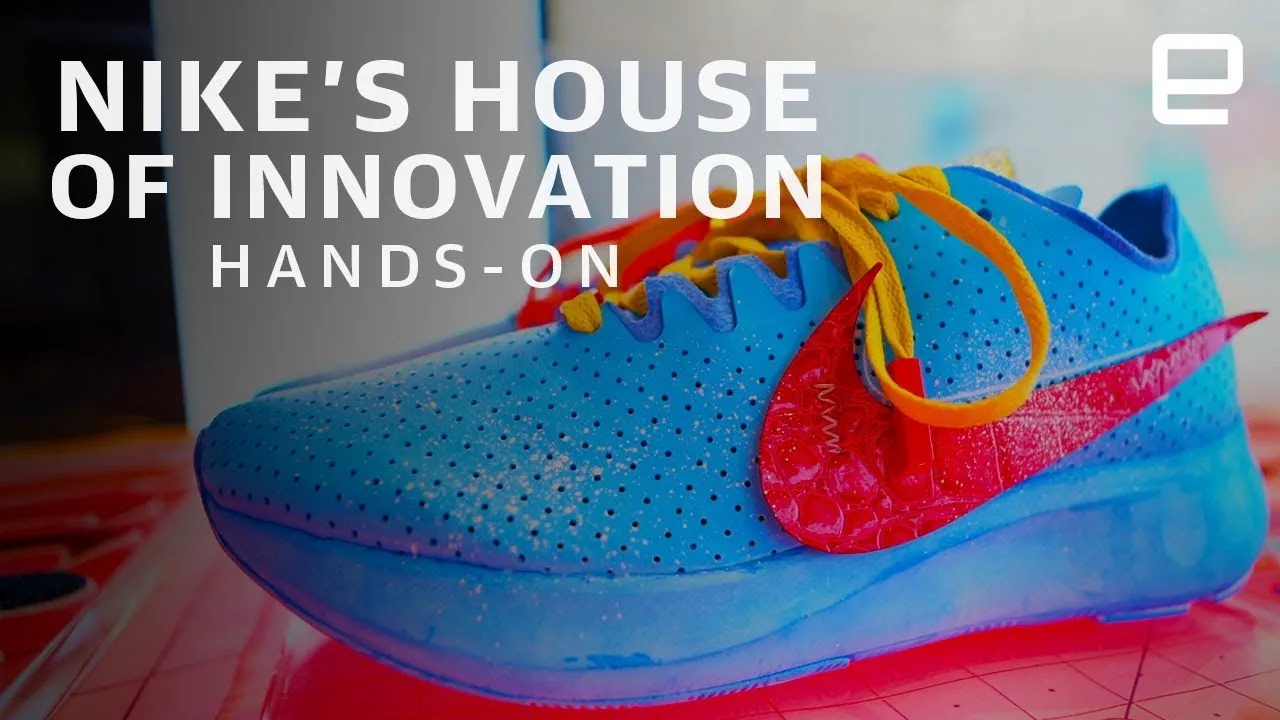
Nike's Omnichannel Approach: Nike leverages technology and data to create personalized customer experiences, integrating its online and offline channels flawlessly. Its Nike Plus membership program is central to its strategy, offering personalized workouts, nutrition plans, and product recommendations based on user data.
Key Lessons:
- Personalization at Scale: Nike shows that with the right data and technology, brands can offer personalized experiences to millions of customers, enhancing loyalty and engagement.
- Seamless Digital Integration: The use of apps (Nike Training Club, Nike Running Club) to enhance in-store experiences, such as reserving shoes for fitting, highlights the power of integrating digital tools with physical retail environments.
- Community Building: Nike's approach goes beyond transactions, focusing on building a community around the brand. This fosters a deeper emotional connection with customers, encouraging long-term loyalty.
Target: Leveraging Data for Enhanced Customer Experience

Target's Omnichannel Approach: Target excels in using customer data to unify the shopping experience across digital and physical spaces. Its Cartwheel app, now part of the Target app, offers personalized discounts and deals, while its in-store experience is enhanced by technology that helps customers easily find products or check out.
Key Lessons:
- Data-Driven Personalization: Target's use of data to offer personalized deals and recommendations shows the importance of understanding customer preferences and behaviors.
- Integration of Mobile and In-Store Experience: The seamless connection between Target's app and its physical stores demonstrates how mobile technology can enhance the brick-and-mortar shopping experience, making it more convenient and enjoyable for customers.
- Adaptability: Target’s ability to integrate and update its technology in response to changing consumer behaviors, such as the addition of curbside pickup, underscores the value of adaptability in omnichannel marketing.
Zara: Fast Fashion and Real-Time Inventory Management

Zara's Omnichannel Approach: Zara's omnichannel strategy excels in inventory management and the rapid turnover of fashion items. Its sophisticated supply chain allows for real-time inventory updates, ensuring product availability both online and in-store. Zara also uses customer feedback and trends to quickly bring new designs to market.
Key Lessons:
- Agility in Supply Chain: Zara's responsive supply chain, powered by real-time data, shows the importance of agility in today’s retail environment. This allows for quick adaptation to trends and customer demands.
- Unified Inventory Management: By maintaining a unified view of inventory across all channels, Zara ensures customers can always find what they're looking for, enhancing satisfaction and reducing missed sales opportunities.
- Customer-Centric Product Development: Zara’s strategy of using customer insights and trends to influence product development exemplifies a customer-centric approach to retail. This not only ensures product relevance but also strengthens the customer’s connection to the brand.
IKEA: Enhancing Shopping Experience with Digital Tools

IKEA's Omnichannel Approach: IKEA has adeptly integrated digital tools to enhance the customer shopping experience, both online and in-store. Its innovative use of augmented reality (AR) through the IKEA Place app allows customers to visualize furniture in their own space before making a purchase. Additionally, IKEA's website and mobile app provide detailed product information, availability, and planning tools, bridging the gap between the online and physical shopping experience.
Key Lessons:
- Innovative Use of AR Technology: IKEA demonstrates the power of AR in providing a unique and helpful shopping tool, enhancing customer confidence in their purchase decisions.
- Seamless Integration of Planning Tools: The integration of planning tools across IKEA’s digital platforms encourages customers to engage with the brand at the planning stage of their shopping journey, leading to higher conversion rates.
- Focus on Customer Experience: IKEA’s omnichannel approach is centered around improving the overall customer experience, from planning through purchase and assembly, showing the importance of a customer-centric strategy in omnichannel marketing.
Best Buy: Omnichannel Excellence in Electronics Retail

Best Buy's Omnichannel Approach: Best Buy excels in creating a unified customer experience across all channels. The brand has successfully implemented price matching, in-store pickup for online orders, and dedicated customer service channels for online and in-store support. Best Buy’s use of customer data also allows for personalized product recommendations and promotions across its website, app, and in-store interactions.
Key Lessons:
- Unified Customer Service: Best Buy's cohesive customer service experience, regardless of the channel, highlights the importance of consistent support in building customer trust and loyalty.
- Personalization Across Channels: By leveraging customer data, Best Buy personalizes the shopping experience, showing the effectiveness of targeted recommendations and promotions in driving sales.
- Adapting to Consumer Needs: The introduction of services like in-store pickup for online orders responds to consumer demands for convenience and flexibility, underscoring the need for businesses to adapt their omnichannel strategies to meet changing customer preferences.
Coca-Cola: Engaging Customers Across Multiple Channels

Coca-Cola's Omnichannel Approach: Coca-Cola’s omnichannel strategy extends beyond traditional and digital advertising to include personalized marketing campaigns, social media engagement, and interactive vending machines. The brand leverages its vast distribution network to create unique customer experiences, such as customizable Coke bottles and cans. Coca-Cola also engages customers through mobile apps, offering rewards and personalized content.
Key Lessons:
- Leveraging Brand Heritage in Omnichannel Marketing: Coca-Cola combines its strong brand heritage with modern marketing techniques to engage customers across multiple channels, reinforcing brand identity and loyalty.
- Creating Interactive Customer Experiences: Coca-Cola’s use of interactive vending machines and customizable products showcases the brand's innovative approach to customer engagement, making each interaction with the brand memorable and unique.
- Personalization and Rewards: Through its mobile app, Coca-Cola offers personalized content and rewards, demonstrating the effectiveness of mobile platforms in building a direct relationship with customers and encouraging repeat purchases.
Samsung: Integrating Product Ecosystems and Customer Service

Samsung's Omnichannel Approach: Samsung stands out for its integration of product ecosystems and exceptional omnichannel customer service. From smartphones to home appliances, Samsung ensures that all its devices work seamlessly together, providing a unified brand experience. Customers can access support and services through various channels, including online forums, social media, dedicated apps, and in-person at Samsung Experience Stores.
Key Lessons:
- Integrated Product Ecosystems: Samsung’s strategy demonstrates the importance of creating interconnected products that enhance the overall brand experience, encouraging customer loyalty and increasing the value of each purchase.
- Comprehensive Omnichannel Support: Offering customer service across multiple platforms ensures that customers can receive help in the manner most convenient to them, enhancing satisfaction and trust in the brand.
- Leveraging Physical and Digital Spaces: Samsung Experience Stores not only provide a venue for direct sales but also serve as a physical touchpoint for experiencing the brand ecosystem, highlighting the value of integrating online and offline customer experiences.
Lululemon: Community Building and Personalized Experiences

Lululemon's Omnichannel Approach: Lululemon excels in creating a community around its brand and offering personalized shopping experiences. Through its app, website, and in-store events like yoga classes and fitness clubs, Lululemon engages customers beyond the transaction. The brand leverages customer data to offer personalized product recommendations and tailors its marketing efforts to individual preferences and behaviors.
Key Lessons:
- Building Brand Communities: Lululemon shows that creating a community around shared interests and values can deepen customer engagement and loyalty, turning customers into brand advocates.
- Personalization and Customer Data: Using customer data to personalize experiences across channels can significantly enhance customer satisfaction and drive repeat business.
- Beyond Transactions: Offering value-added experiences, such as free fitness classes, can enrich the customer relationship, making the brand a part of the customer’s lifestyle.
Netflix: Data-Driven Personalization Across Devices

Netflix's Omnichannel Approach: Netflix leverages its sophisticated data analytics to provide highly personalized content recommendations across all devices. Whether customers are accessing Netflix on their smart TVs, smartphones, tablets, or laptops, the platform continuously learns from their viewing habits to improve and customize the viewing experience. This data-driven approach ensures consistency and personalization in every interaction with the brand.
Key Lessons:
- Leveraging Big Data for Personalization: Netflix demonstrates the power of using big data to create personalized customer experiences at scale, increasing engagement and customer retention.
- Seamless Experience Across Devices: Ensuring that customers receive a consistent and personalized experience across all devices is crucial in today’s multi-device world, enhancing the convenience and appeal of the service.
- Customer-Centric Content Strategy: Netflix’s focus on customer data to inform its content strategy and recommendations underscores the importance of a customer-centric approach in product development and marketing.
eBay: Seamless Online Marketplace and Customer Engagement
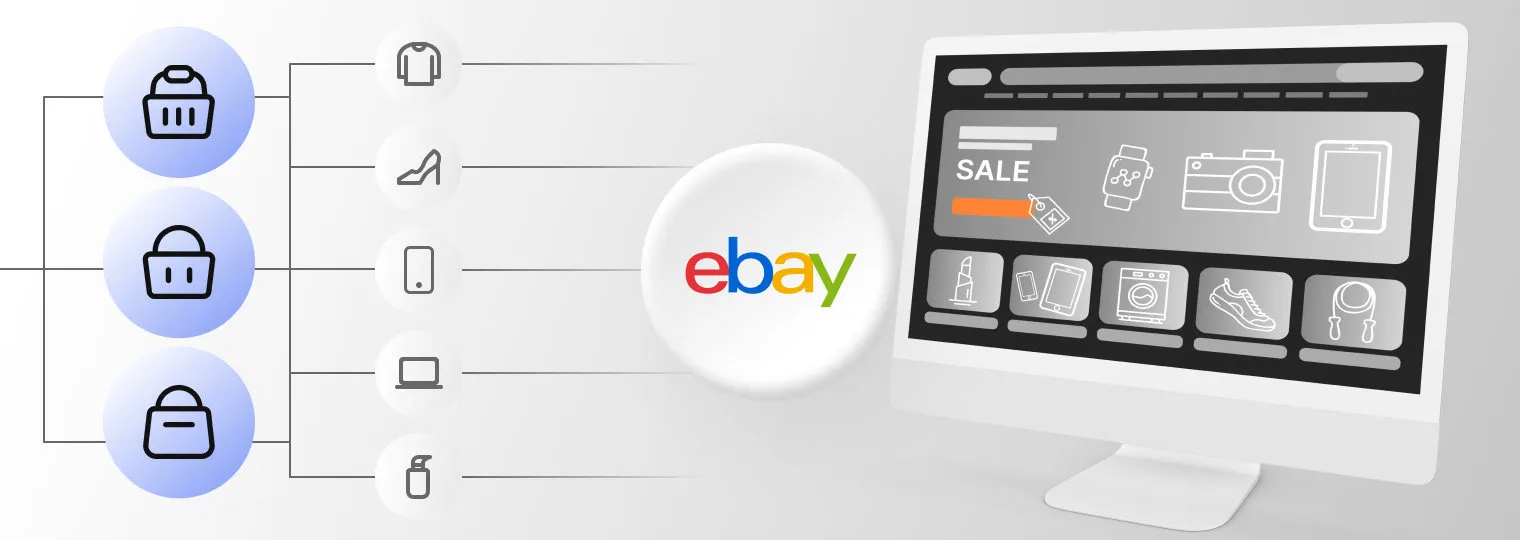
eBay's Omnichannel Approach: eBay provides a seamless online marketplace experience, connecting buyers and sellers across the globe. Through its website and mobile app, eBay offers personalized shopping experiences, including tailored product recommendations and notifications about auctions and deals. eBay also engages with customers through social media, email marketing, and customer support channels to ensure a cohesive and responsive shopping experience.
Key Lessons:
- Marketplace Consistency: eBay’s ability to offer a consistent and reliable marketplace experience across its website and app demonstrates the importance of seamless functionality and design in omnichannel retail.
- Dynamic Personalization: The use of data to dynamically personalize the shopping experience helps in matching buyers with the products they love, increasing transaction success rates.
- Engaging Customer Support: Providing responsive and helpful customer support across multiple channels, including live chat, social media, and forums, fosters trust and reliability, key factors in customer satisfaction and loyalty in online marketplaces.
Steps to Measure Omnichannel Customer Engagement ROI
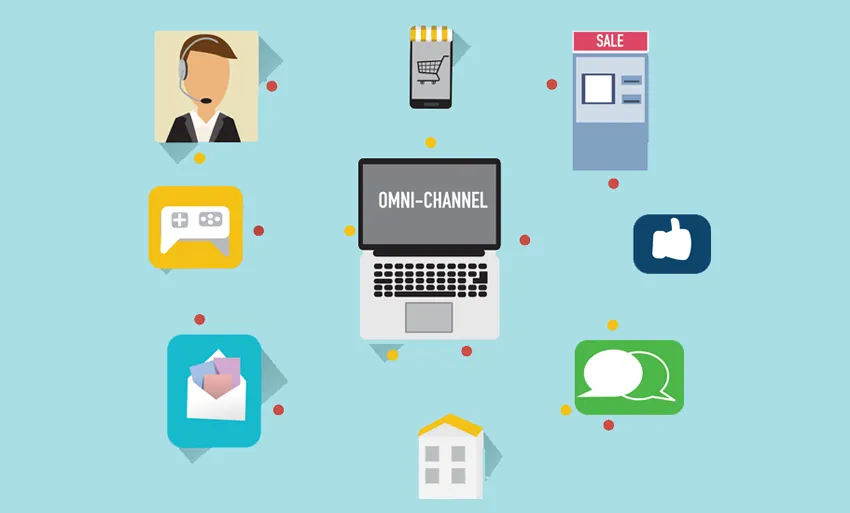
To effectively measure the ROI of omnichannel customer engagement, it's essential to systematically track and analyze the performance across all channels and touchpoints.
Here’s a structured approach to understanding the impact of your omnichannel strategy:
Step 1: Establish Key Performance Indicators (KPIs)
Develop a comprehensive plan that outlines:
- Channels: Identify all the channels involved in your campaigns, such as social media, email, PPC ads, and organic search.
- Opportunities: Track metrics like impressions, site visits, social media shares, and keyword searches that indicate potential customer interest.
- Actions: Monitor direct customer actions including clicks, form submissions, conversions, and engagement with co-branded content.
- Engagement: Measure interactions that show deeper customer interest, such as video views, social media reactions (likes, shares), and comments.
- Weighting: Assign importance to different metrics based on your specific campaign goals and strategies.
- Perception: Gauge customer sentiment through surveys, brand-related search terms, and analysis of social media sentiments
Mapping out these metrics will help you quantify the effectiveness of each channel and action within your omnichannel strategy.
Step 2: Implement Comprehensive Dashboards
Utilize three main dashboards to monitor your omnichannel efforts:
- Acquisition Dashboard: This tracks the sources of traffic to your channels, breaking down the data into organic/direct, paid (social/search ads), referral, and CRM-driven traffic.
- Engagement Dashboard: Focuses on how users interact with your content, including behavior funnels and cohort analysis to understand patterns over time.
- Conversion Dashboard: Analyzes the outcomes of your engagement efforts, detailing ROI, average spending, product category performance, and the time from installation to conversion.

Step 3: Analyze Success Metrics
Calculate the compound success value of each channel by integrating key metrics (action, engagement, and perception).
This holistic view enables you to assess the overall effectiveness of your omnichannel strategy, identifying which channels and types of engagement drive the most value.

Step 4: Calculate ROI
Incorporate both costs and benefits into your analysis to determine the business impact of your omnichannel campaigns. Consider factors like:
- Perception Metrics: Awareness measures such as impressions and social media engagement.
- Engagement Metrics: Consideration indicators including email opens, click-through rates, and session durations.
- Action Metrics: Outcomes related to your overarching campaign goals, like customer acquisition, retention, and loyalty.
Strategies for Enhancing Customer Experience and Loyalty Through Omnichannel Approaches

Enhancing customer experience and loyalty through omnichannel approaches requires a strategic focus on seamless integration across all customer touchpoints.
Here are several strategies that can help businesses achieve this goal:
Unified Customer View:
- Implement a centralized customer data platform (CDP) to gather and integrate customer data from all channels. This unified view allows for more personalized and consistent interactions across touchpoints.
Personalization at Scale:
- Leverage AI and machine learning to analyze customer data and deliver personalized experiences. This can include product recommendations, personalized marketing messages, and tailored customer service interactions.
Seamless Integration Across Channels:
- Ensure that all channels are fully integrated, allowing customers to move smoothly between online and offline touchpoints. For example, enable customers to check in-store inventory online, buy online for in-store pickup, and access customer service through their preferred channel.
Customer Journey Optimization:
- Map out the entire customer journey to identify and eliminate friction points. This involves understanding the various paths customers take to purchase and optimizing each step for a smoother experience.
Consistent Brand Experience:
- Maintain a consistent brand message and aesthetic across all channels. This consistency helps reinforce brand recognition and loyalty as customers interact with the brand through different mediums.
Responsive and Proactive Customer Service:
- Offer multiple customer service channels (such as chat, phone, email, and social media) and ensure they are integrated so that customer history is accessible regardless of the channel. Use predictive analytics to proactively address potential issues before they affect the customer.
Engagement and Community Building:
- Create opportunities for engagement beyond transactions. Use social media, forums, and loyalty programs to build a community around your brand. Engage customers with exclusive content, insider access, and opportunities to provide feedback.
Continuous Feedback Loop:
- Implement a system for collecting and acting on customer feedback. Use surveys, social listening, and direct customer interactions to gather insights. This feedback should inform continuous improvements in products, services, and the overall customer experience.
Education and Support:
- Provide educational content and robust support resources to help customers make the best use of your products or services. This can include tutorials, FAQs, and community forums where customers can help each other.
Loyalty Programs:
- Design a loyalty program that rewards customers for their engagement across channels. Rewards can be tailored to customer preferences and behaviors, encouraging repeat business and deeper engagement with the brand.
Essential Tools for Omnichannel Engagement
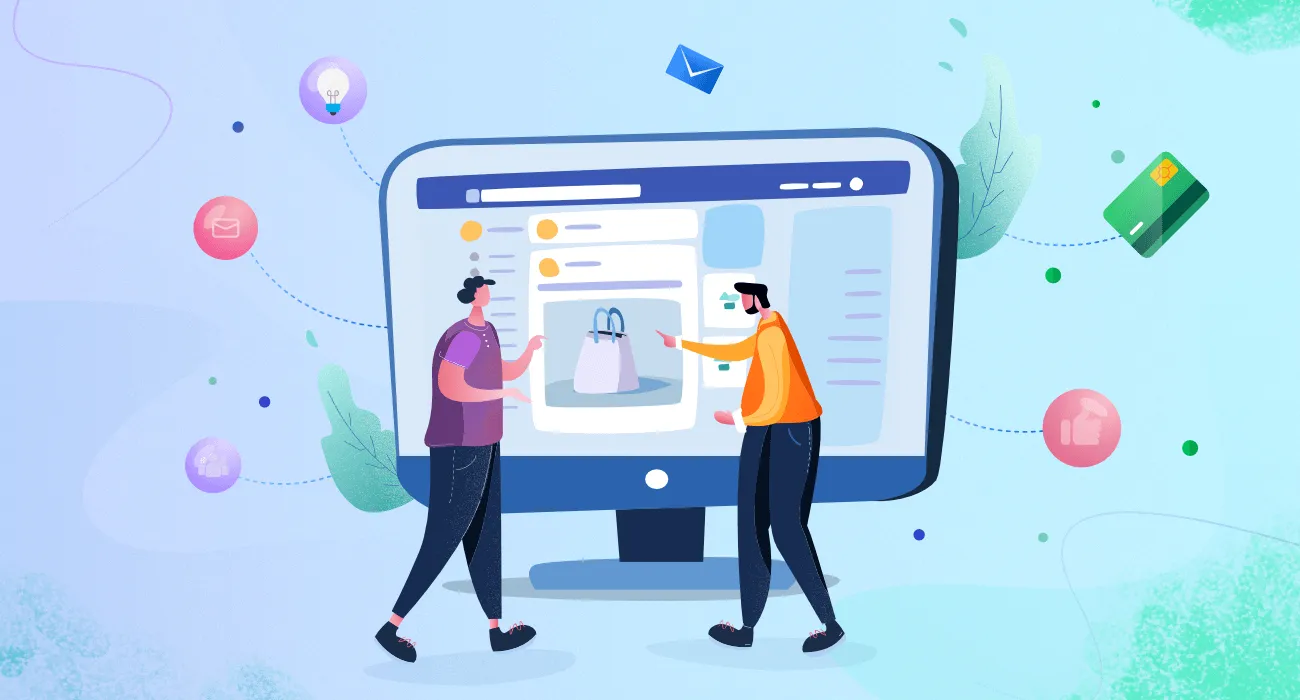
Technology is key in omnichannel marketing. It connects different channels smoothly so customers get a uniform and tailored experience. As digital tools and ways to reach customers grow, so do the tools we need to connect with them everywhere.
Let's look at the main tools for omnichannel engagement and why they matter.
Customer Relationship Management (CRM) Systems
CRM systems offer a centralized platform to track and manage customer interactions across all channels. They provide a 360-degree view of the customer, enabling personalized communication and improving customer service.
- Salesforce: Offers a comprehensive suite of features including sales management, marketing automation, partner relationship management, and customer service.
- HubSpot: Known for its inbound marketing capabilities, HubSpot integrates sales, marketing, and service hubs to attract, engage, and delight customers.
Data Management Platforms (DMPs)
DMPs collect, organize, and analyze vast amounts of data from various sources, including online and offline data. They help marketers understand customer behavior and segment audiences for targeted campaigns.
- Adobe Audience Manager: A leading DMP that helps you build unique audience profiles so you can identify your most valuable segments and use them across any digital channel.
- Lotame: Provides robust data management capabilities to collect, organize, and activate data from any source, helping marketers to deliver more personalized customer experiences.
Content Management Systems (CMS)
A CMS is crucial for managing digital content across websites and mobile apps. It allows for the easy creation, management, and optimization of content, ensuring consistency across all digital channels.
- WordPress: Powers a significant portion of the web, offering flexibility and a vast ecosystem of plugins for SEO, social media integration, and more.
- Adobe Experience Manager: A comprehensive content management solution for building websites, mobile apps, and forms, designed to work well within the Adobe ecosystem, enhancing customer experience across all touchpoints.
E-commerce Platforms
E-commerce platforms are essential for integrating online and offline sales channels, providing a consistent shopping experience, and strengthening customer journeys. They support inventory management, order fulfillment, and customer service.
- Shopify: Offers a user-friendly platform with robust e-commerce features, including online store creation, payment processing, and marketplace integration.
- Magento (Adobe Commerce): Provides a flexible, scalable e-commerce solution for businesses of all sizes, with strong customization capabilities and a wide range of extensions.
Marketing Automation Platforms
These platforms automate repetitive marketing tasks, streamline marketing workflows, and provide insights into customer interactions across channels. They enable personalized marketing at scale.
- Marketo: A comprehensive marketing automation platform that offers email marketing, lead management, and analytics.
- Mailchimp: Well-known for its email marketing services, it has expanded into a full marketing platform offering automation, advertising, and analytics.
Analytics and Business Intelligence Tools
Analytics tools are critical for measuring the effectiveness of omnichannel strategies, providing insights into customer behavior, and optimizing marketing efforts.
- Google Analytics: Offers detailed insights into website traffic, user behavior, and conversion tracking across channels.
- Tableau: A powerful business intelligence tool that helps companies visualize and understand their data, making it easier to identify trends and make data-driven decisions.
Navigating Challenges in Omni Channel Marketing: Strategies for Overcoming Obstacles

Challenge 1: Data Silos and Integration Issues
Implement Unified Technology Solutions: Use integrated Customer Relationship Management (CRM) systems and Enterprise Resource Planning (ERP) software that consolidate data from various channels into a single, accessible platform. This enables a holistic view of customer interactions and behaviors.
Adopt Data Management Platforms (DMPs): DMPs can collect, organize, and activate data from multiple sources, breaking down silos and allowing for more targeted and personalized marketing efforts.
Challenge 2: Consistency Across Channels
Develop a Coherent Brand Strategy: Ensure that your brand messaging, tone, and visual identity are consistent across all channels. This can be achieved through comprehensive brand guidelines that are strictly followed by all teams.
Regularly Audit Channels: Conduct regular audits of all your channels to ensure consistency in messaging and customer experience. This helps identify any discrepancies and areas for improvement.
Challenge 3: Personalizing the Customer Experience
Leverage Advanced Analytics: Utilize analytics and AI-driven insights to understand customer preferences and behaviors. This information can then be used to deliver personalized experiences and recommendations across channels.
Segment Your Audience: Create detailed customer segments based on demographics, behavior, and purchase history. Tailor your marketing efforts to these segments for more effective personalization.
Challenge 4: Keeping Up with Evolving Customer Expectations
Stay Agile: Develop a flexible omnichannel strategy that can quickly adapt to changes in consumer behavior and market trends. This includes being open to adopting new technologies and channels as they emerge.
Engage in Continuous Learning: Regularly collect and analyze customer feedback across all touchpoints. Use this feedback to continuously refine and improve the customer experience.
Challenge 5: Measuring Omnichannel ROI
Define Clear KPIs: Establish specific, measurable KPIs that align with your omnichannel objectives. This could include metrics related to customer acquisition, retention, satisfaction, and conversion rates.
Use Attribution Modeling: Implement a multi-touch attribution model that accurately assigns value to each touchpoint in the customer journey. This helps in understanding the contribution of each channel to the overall ROI.
Challenge 6: Aligning Teams and Departments
Foster Cross-Departmental Collaboration: Encourage regular communication and collaboration between departments (marketing, sales, customer service) to ensure alignment on omnichannel strategies and objectives.
Conduct Regular Training: Provide ongoing training and development opportunities for staff to understand the importance of omnichannel marketing and their role in executing it effectively.
Challenge 7: Maintaining Privacy and Security
Adhere to Regulations: Ensure compliance with data protection regulations such as GDPR and CCPA. This involves obtaining explicit consent for data collection and use, and providing clear privacy policies.
Implement Robust Security Measures: Invest in cybersecurity measures to protect customer data across all channels. Regularly review and update these measures to guard against emerging threats.





.jpg)

.jpg)
